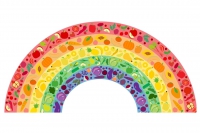From a young age, we learn that fruits and vegetables are good for us. They are full of vitamins and minerals and even my 6 year old can tell me that oranges give him vitamin C. However, when I tell him his blueberries are full of polyphenols he looks a bit confused. I can’t blame him, it’s not a word that crops up much in his reading books and it’s hard to explain! These complicated words are something we should pay attention to though, so let’s understand a little more about them. So what exactly are polyphenols?
Polyphenols are a group of compounds that come under the umbrella of phytochemicals. Phytochemicals quite literally mean the chemicals in plants. These chemicals are not nutrients but are there to protect the plant. They have many different roles, but all protect plants in some way from damage or danger; a plant’s natural defences have to be strong, as unlike animals and humans they can’t run away from danger. Some may act as antioxidants; others protect cells from damage or fight disease and infection. There are over 4000 different phytochemicals each with their own properties. Whilst you can’t taste them, you know they are present because they are responsible for the colour of different fruits and vegetables, with those richest in colour having the largest number of phytochemicals present.
Phytochemicals, including polyphenols are therefore considered to be beneficial for our bodies, as they enhance the potential health benefits and nutritional power of the fruit, vegetables or other plant foods we eat. They are able to protect us from health problems in the future such as type 2 diabetes, cardiovascular disease and some cancers. They also support our health in the short term by protecting our immune system. If phytochemicals such as polyphenols can be preserved during processing, this is therefore a bonus.
We often hear nutritionists recommending we ‘eat the rainbow’ – this is because each colour represents different phytochemicals and the more variety in our diet, the better.






